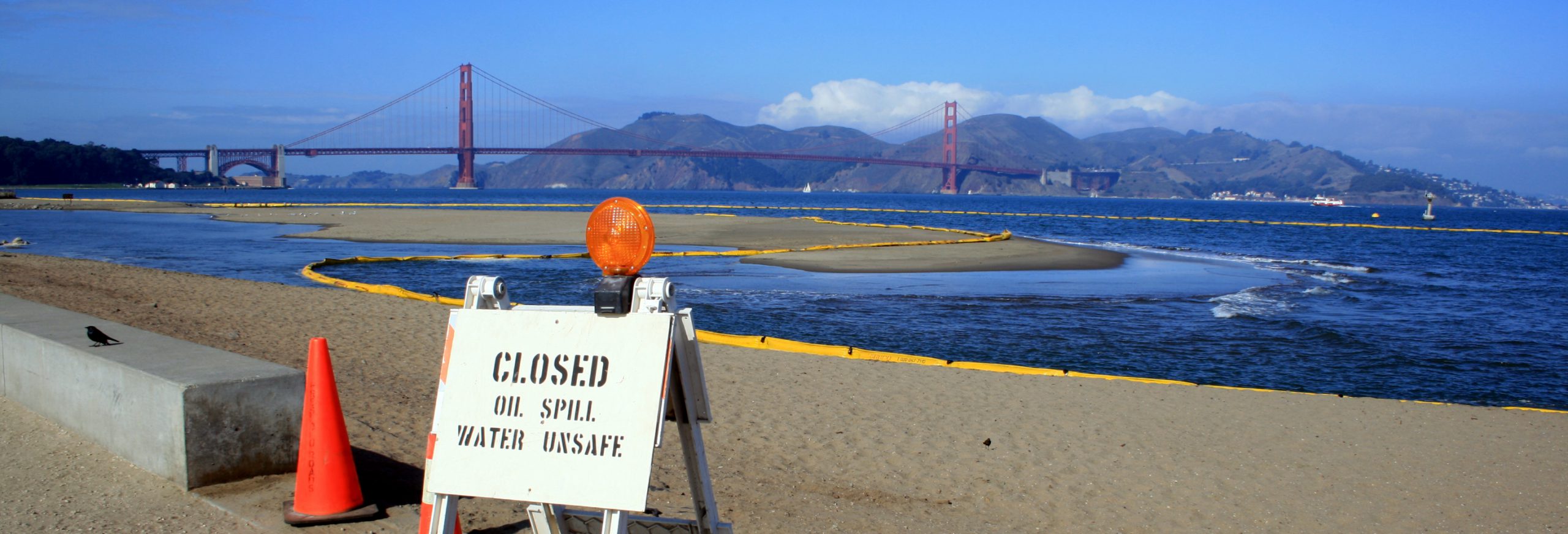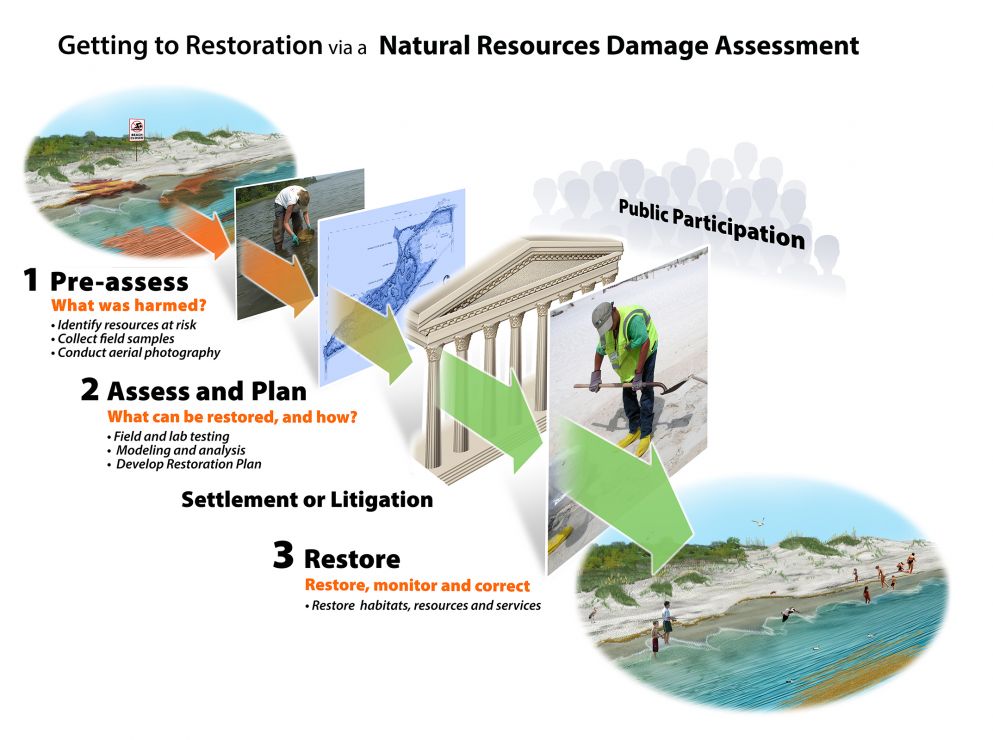
Latest News
- Refugio Beach Oil Spill Settlement: South Coast Shoreline Parks and Outdoor Recreation Grants Program: Six full proposals are being considered for funding; public comments were welcomed until October 27, 2023.
- Refugio Beach Oil Spill Restoration Trustee Council Update, May 2023
- Pipeline-P00547
On January 25, 2023, a virtual meeting was held to learn more about the Pipeline P00547 NRDA. - NRDA Newsletter Update, October 3, 2022.
Partners and Additional Information
Contacts
Sarah Mongano, Primary trustee council representative
Senior Environmental Scientist
916.574.1889
Christopher Huitt, Alternate trustee council representative
Senior Environmental Scientist
916.574.2080
Christopher Workman, Trustee council legal representative
Attorney I
916.574.1920
What is a Natural Resource Damage Assessment?
Natural Resource Damage Assessment (NRDA) is the process used to identify and quantify the adverse impacts to natural resources from an oil spill or hazardous substance release, and to obtain compensation from the responsible party to remediate the negative impacts to natural resources and lost recreational uses resulting from the incident. The goal is to examine the natural resource injuries from oil spills or other hazardous substance releases, quantify the injuries, and restore the injured resources and compensate the public for the lost interim ecological benefits and uses of those resources.
While the priority during any spill is containment and clean-up, once a spill occurs in California waters Commission staff begins to work with the staff of the California Department of Fish and Wildlife’s Office of Spill Prevention and Response, National Oceanic and Atmospheric Administration, United States Fish and Wildlife Service, and other affected federal and state agencies to start gathering evidence showing the extent of the damage so that the party or parties responsible for the spill will pay for the restoration of the damaged resources. This work begins while the containment and clean-up are occurring, and is the first phase of the Natural Resource Damage Assessment process. Every spill is unique, and for each one, a separate Natural Resource Damage Assessment Trustee Council is formed by state and federal agencies with jurisdiction over the resources that were damaged. The Trustee Council quantifies the impacts to wildlife, habitat and recreation, and the lost use of these resources. The Trustee Council then develops a restoration plan and works to reach a settlement amount for quantified damages with the responsible party.

Larger view available. Credit: NOAA Office of Response & Restoration.
What is the Commission's role as a trustee?
For any spill in California waters, the Commission will participate in the resulting Natural Resource Damage Assessment Trustee Council in its capacity as the landowner of the tidelands and submerged lands that were impacted by the spill. The Commission also participates in the Montrose Settlements Restoration Program Trustee Council, which was formed in response to injury from the long-term release of DDT and PCBs, rather than oil, into the marine environment.
Representatives from state and federal natural resource trustee agencies (Trustees), including the Commission, conducted a Natural Resource Damage Assessment to identify the impacts on wildlife, the coastal environment, the public trust, and human uses from the May 2015 Refugio Beach oil spill in Santa Barbara County. The assessment was completed, and the final settlement was reached in June 2021, in the amount of $22 million. The Trustees formed a Trustee Council following the settlement to oversee the implementation, monitoring, and completion of the restoration projects and a grants program outlined in the Final Damage Assessment and Restoration Plan/Environmental Assessment (DARP/EA) for the spill.
The Trustees are currently conducting a Natural Resource Damage Assessment to identify the impacts on wildlife, the coastal environment, the public trust, and human uses from the October 2021 Pipeline P00547 oil spill in Orange County. The assessment will quantify the impacts and develop a restoration plan. The Trustees will ultimately make a claim for funds from Amplify Energy Corporation, the responsible party, to implement the restoration projects designed to restore and compensate for the damaged resources and lost use of these resources.
Commission Involved Assessment Actions Since 1990
- Pipeline P00547, October 2, 2021
- Refugio, May 19, 2015
- Cosco Busan, November 7, 2007
- Montrose CERCLA, Chronic, remediation in progress
- Stuyvesant – Humboldt, September 6, 1999
- Command, September 26, 1998
- Kure, November 5, 1997
- Torch – Platform Irene, September 28, 1997
- Cape Mohican, October 28, 1996

